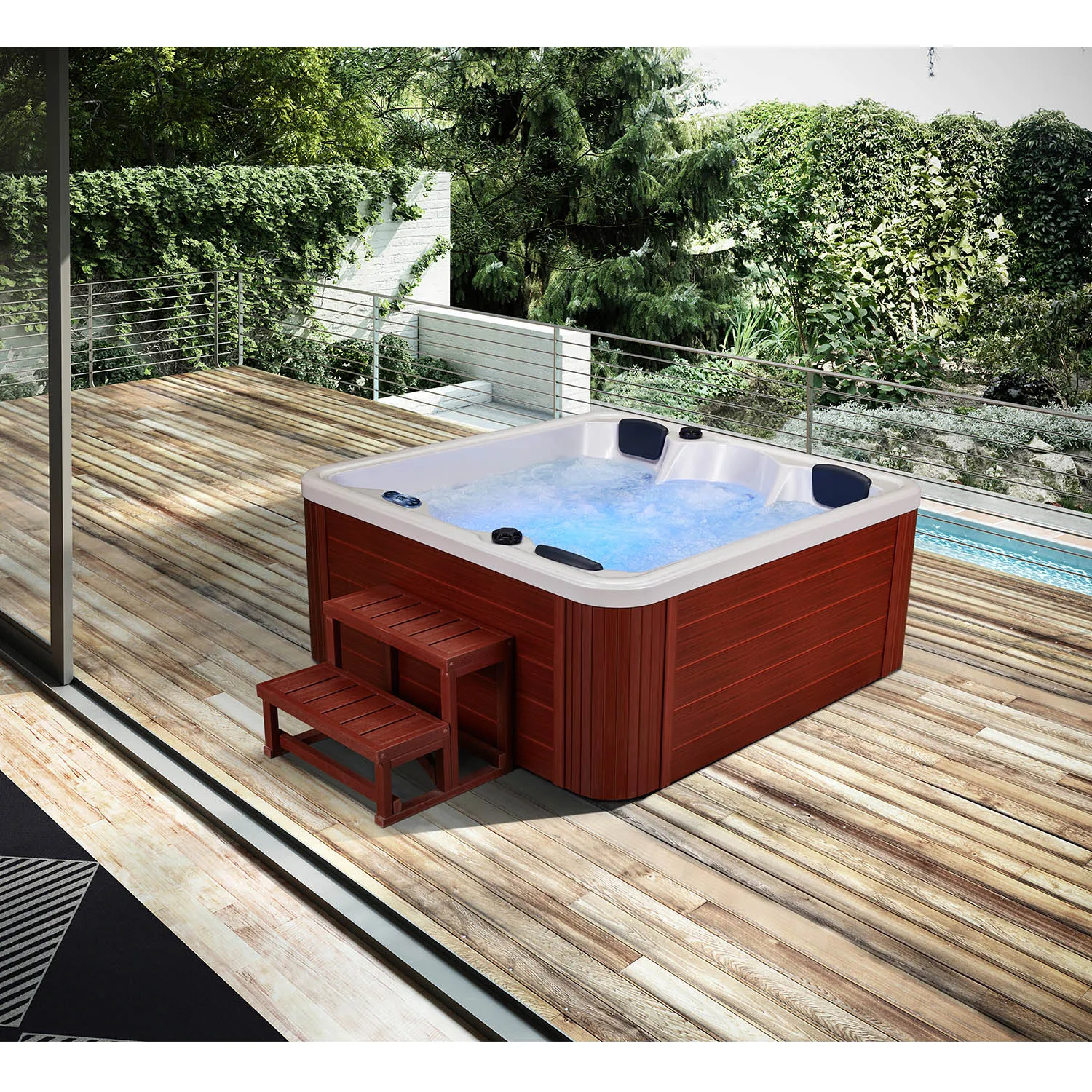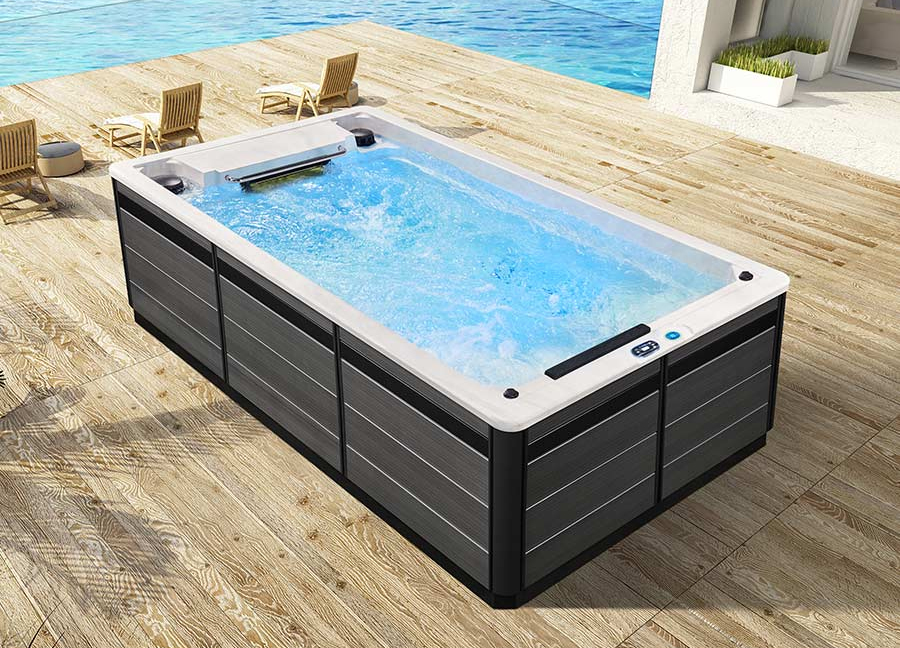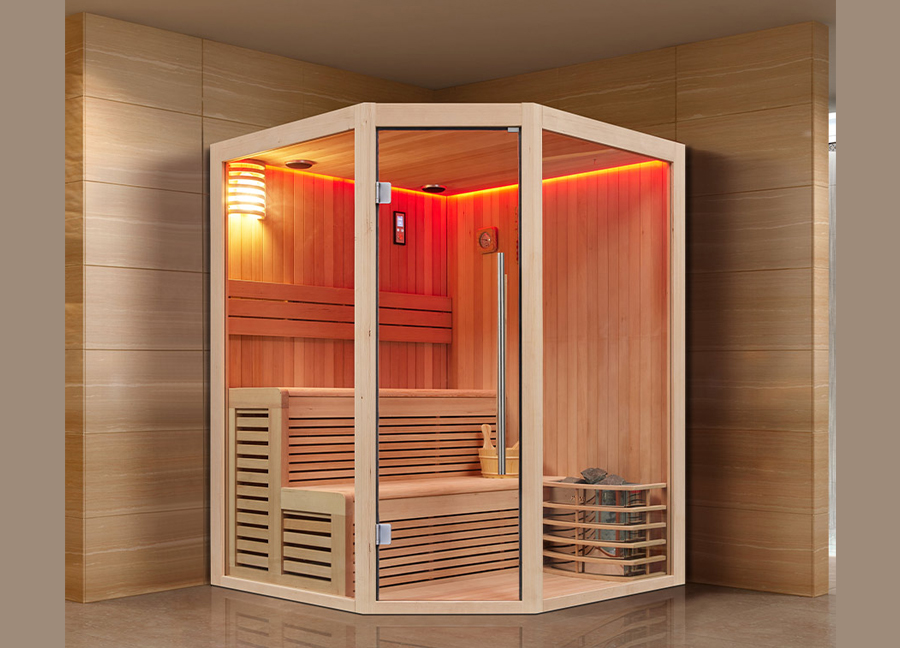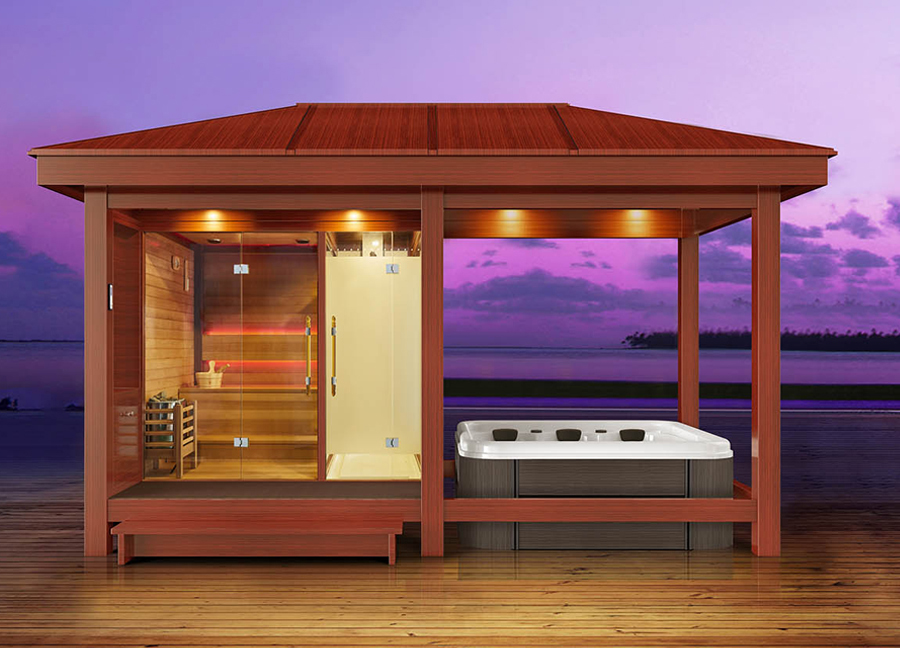Hydrotherapy hot tubs are known for relaxing muscles, promoting circulation, and reducing stress. Many families, after enjoying the comfort of a hot tub, wonder: "Can my baby take a hydrotherapy hot tub?"
This question is particularly crucial for infants due to their delicate skin and immature thermoregulation system. While hydrotherapy hot tubs can indeed provide a soothing experience, they also pose potential risks for infants and young children.
This article will systematically and scientifically answer the questions: What age can babies take a hydrotherapy hot tub? And how can we ensure safety and health?

Why do infants' bodies react differently to hydrotherapy hot tubs than adults?
1. Infants' thermoregulation mechanisms are not yet fully developed
The thermoregulation systems of newborns and young children are still developing. Their skin is thin, and their vasodilation response is unstable, making them prone to temperature fluctuations due to changes in external temperature.
The temperature of a hydrotherapy hot tub is typically maintained at 100–104°F (approximately 37.8–40°C), a temperature comfortable for adults but potentially too high for infants.
In hot water, an infant's body temperature can rise rapidly, potentially leading to hyperthermia within minutes, causing increased heart rate, dehydration, or even fainting.
2. Infants' skin absorbs chemicals more easily
The water in a hydrotherapy hot tub relies on chemicals (such as chlorine, bromine, and pH adjusters) to maintain cleanliness. While these substances have limited effects on adult skin, infants' skin is more permeable, and chemical residues can be absorbed through the skin, causing irritation, dryness, or even mild poisoning.
3. Infants' immune systems are not fully developed
Even after sterilization, hydrotherapy hot tubs may contain small amounts of bacteria or fungi. These microorganisms are usually harmless to adults, but can cause skin inflammation, ear infections, or respiratory infections in infants whose immune systems are still developing.

How old should a baby be to use a hydrotherapy hot tub?
Scientific and pediatric advice generally recommends that infants under 2 years old not use a hydrotherapy hot tub.
1. Newborns to 6 months: Absolutely not suitable
• Extremely weak thermoregulation;
• Skin barrier not yet formed;
• Extremely sensitive to chemicals.
Babies at this stage should avoid any hot baths, even short ones, as they may overheat or become dehydrated.
2. 6 months to 2 years: Still at high risk
Although some infants can adapt to warmer environments, their surface area relative to their weight is relatively large, making them prone to absorbing too much heat in a short time.
If exposure to warm water is necessary, the water temperature should not exceed 37°C (98.6°F), and the time should not exceed 5 minutes. Hydrotherapy hot tubs should not be used at this stage.
3. Children over 2 years old: Limited participation is possible, but strict monitoring is required
After children turn 2 years old, their thermoregulation function is relatively stable, and their skin resistance is enhanced, allowing for short soaks in specially temperature-controlled hydrotherapy hot tubs.
However, the following principles should still be observed:
• Water temperature should not exceed 37.5°C (99.5°F);
• Bathing time should be limited to 5–10 minutes;
• Adult supervision is required at all times;
• Ensure that the concentration of chemicals in the water meets child safety standards.
A hydrotherapy hot tub can only be used briefly and safely when the child is 2 years of age or older, in good health, and the bathtub temperature is strictly controlled.

What are the potential risks of hydrotherapy hot tubs for infants and young children?
Even under strict supervision, there are several potential risks for infants and young children when exposed to hydrotherapy hot tubs.
1. Overheating and Dehydration
Infants have a high body water content. Prolonged exposure to hot water can lead to fluid loss through sweating and vasodilation. Since they do not actively drink water to replenish fluids, they are prone to mild dehydration or heatstroke.
Common symptoms include:
• Facial flushing;
• Rapid breathing;
• Weakness and drowsiness;
• Dry or burning sensation of skin.
2. Skin and Mucous Membrane Irritation
The chlorine or bromine used in hydrotherapy hot tubs releases byproducts, such as chloramine gas, at high temperatures. Infants have delicate skin, and their nasal and eye mucous membranes are easily irritated. Even if the chemical dosage is within standards, erythema or stinging may occur.
3. Infection Risk
The warm, circulating water environment easily breeds bacteria, such as Pseudomonas aeruginosa and Legionella.
These bacteria can enter the body through broken skin, eyes, or respiratory tract, causing infection. Infants and young children have weaker immune systems and are more susceptible.
4. Accidental Drowning Risk
The jets and bubbles of the hydrotherapy hot tub can interfere with an infant's sense of balance. Infants have relatively large heads, and if they slip, they may not be able to support themselves or breathe, which is extremely dangerous.
How much does the water temperature of a hydrotherapy hot tub affect a baby?
Water temperature is one of the key factors determining whether an infant or young child can safely use a hydrotherapy hot tub.
Age range | Recommended maximum water temperature | Recommended bath time | Is hydrotherapy hot tub recommended? |
0–6 months | Not exceeding 37°C | No more than 3 minutes | ❌ Not recommended |
| 6–24 months | Not exceeding 37°C | No more than 5 minutes | ⚠️ High risk |
| 2 years and older | Not exceeding 37.5°C | No more than 10 minutes | ✅ Can be used temporarily |
| Adult | 37.8–40°C | 15–20 minutes | ✅ Can be used normally |
Effects of elevated temperature on infants:
• Above 38°C: An infant's body temperature will rise 1–2°C within minutes;
• Reaching 40°C: May cause a drop in blood pressure and reduced oxygen supply to the brain;
• Above 41°C: The thermoregulation system may fail, potentially leading to fainting or seizures.
Therefore, even for brief exposure, infants should not be exposed to a hydrotherapy hot tub above 37.5°C.
How to ensure children's safety when using a hydrotherapy hot tub?
If a child is over 2 years old and in good health, parents can allow them to experience a low-temperature hydrotherapy hot tub under strict supervision, but the following safety guidelines must be followed:
1. Control temperature and time
• Maintain a constant water temperature of 36–37.5°C;
• Bath time should not exceed 10 minutes;
• If the child's face becomes red or sweats, remove them immediately.
2. Maintain Safe Disinfectant Concentration
•The standard adult hydrotherapy hot tub chlorine concentration is typically 3–5 ppm, but this may be too high for children.
•The concentration should be kept between 2–3 ppm, while ensuring the pH remains within the neutral range of 7.2–7.8.
3. Avoid Foam and Aromatherapy Additives
•Essential oils, bath foams, and detergents can irritate a baby's skin and should be completely avoided. Use only clean, well-filtered water.
4. Increase Supervision and Anti-Slip Measures
• Use a non-slip mat;
• Adults should support the infant with both hands;
• Do not leave a child unattended in the bathtub for even a few seconds.

How to Care for Infants After a Hydrotherapy Hot Tub Bath?
Even with brief exposure, proper aftercare is essential.
1. Rinse Skin with Warm Water
After the bath, rinse the baby's entire body with clean, warm water to remove any chemical residue.
2. Gently Pat Dry and Moisturize
After gently patting the skin dry with a soft towel, apply baby-specific moisturizing lotion to prevent dryness or allergies.
3. Observe for Reactions
If skin redness, coughing, or drowsiness occurs, discontinue use immediately and consult a doctor.
What are the alternatives to a hydrotherapy hot tub for babies?
If you want your baby to experience the soothing sensation of warm water while avoiding the risks of a hot tub, consider the following safer alternatives:
• Baby-specific thermostatic bathtub: Temperature-controlled, no added chemicals;
• Warm water bath: Maintained at 36–37°C, for no more than 10 minutes;
• Baby spa: Designed specifically for babies, equipped with support rings and a low-temperature setting.
These methods provide a comfortable aquatic experience in a safe environment.
What Brands Have Partnered with MEXDA for OEM Production?
Over 20 brands collaborate with us for OEM and private label production. We’ve manufactured customized outdoor spas, massage bathtubs, and steam bathrooms under well-known European and American names.
Working as a trusted China manufacturer, we guarantee confidentiality, high-quality standards, and scalable purchasing capacity. New partners are welcome to join our growing network of satisfied clients.






